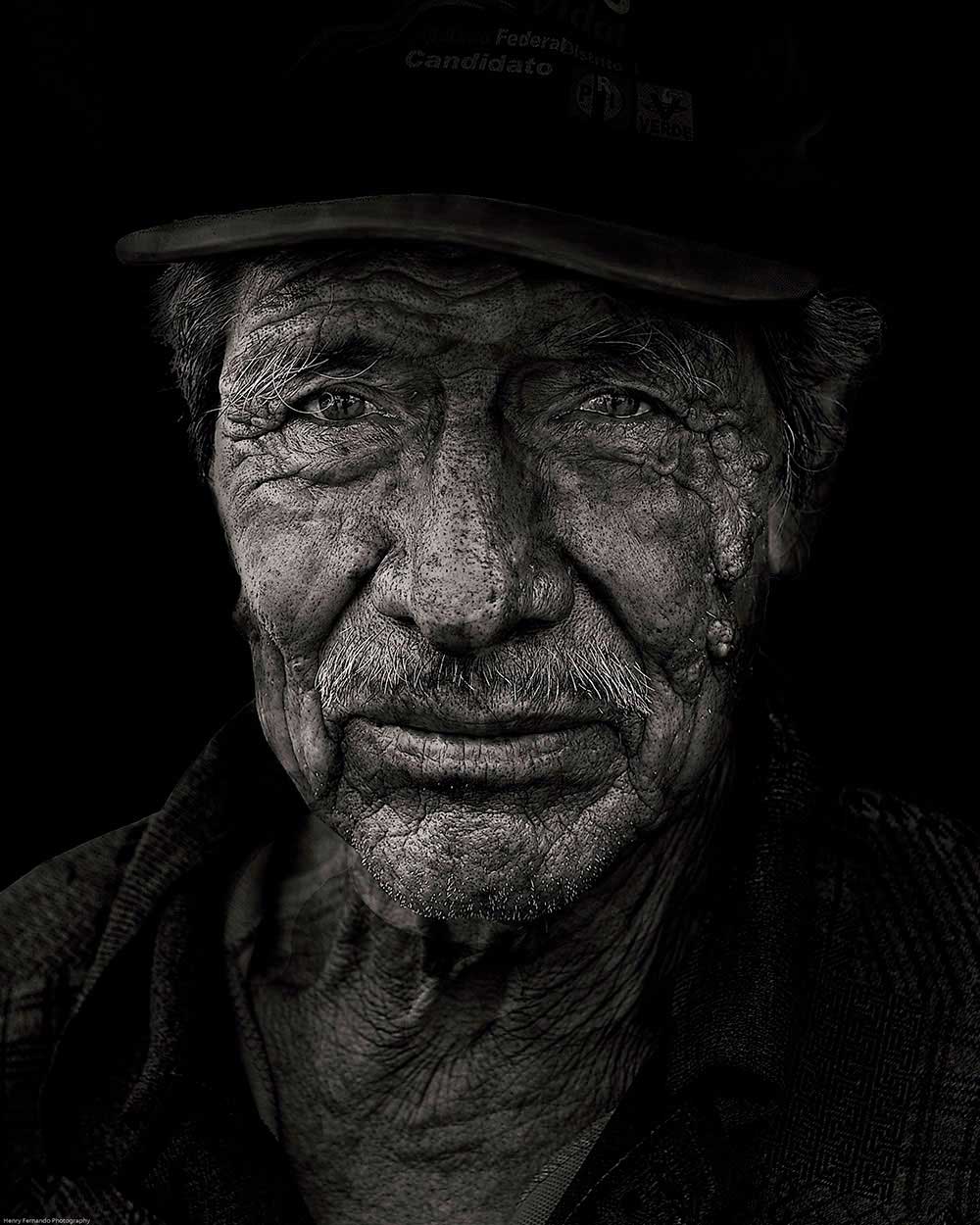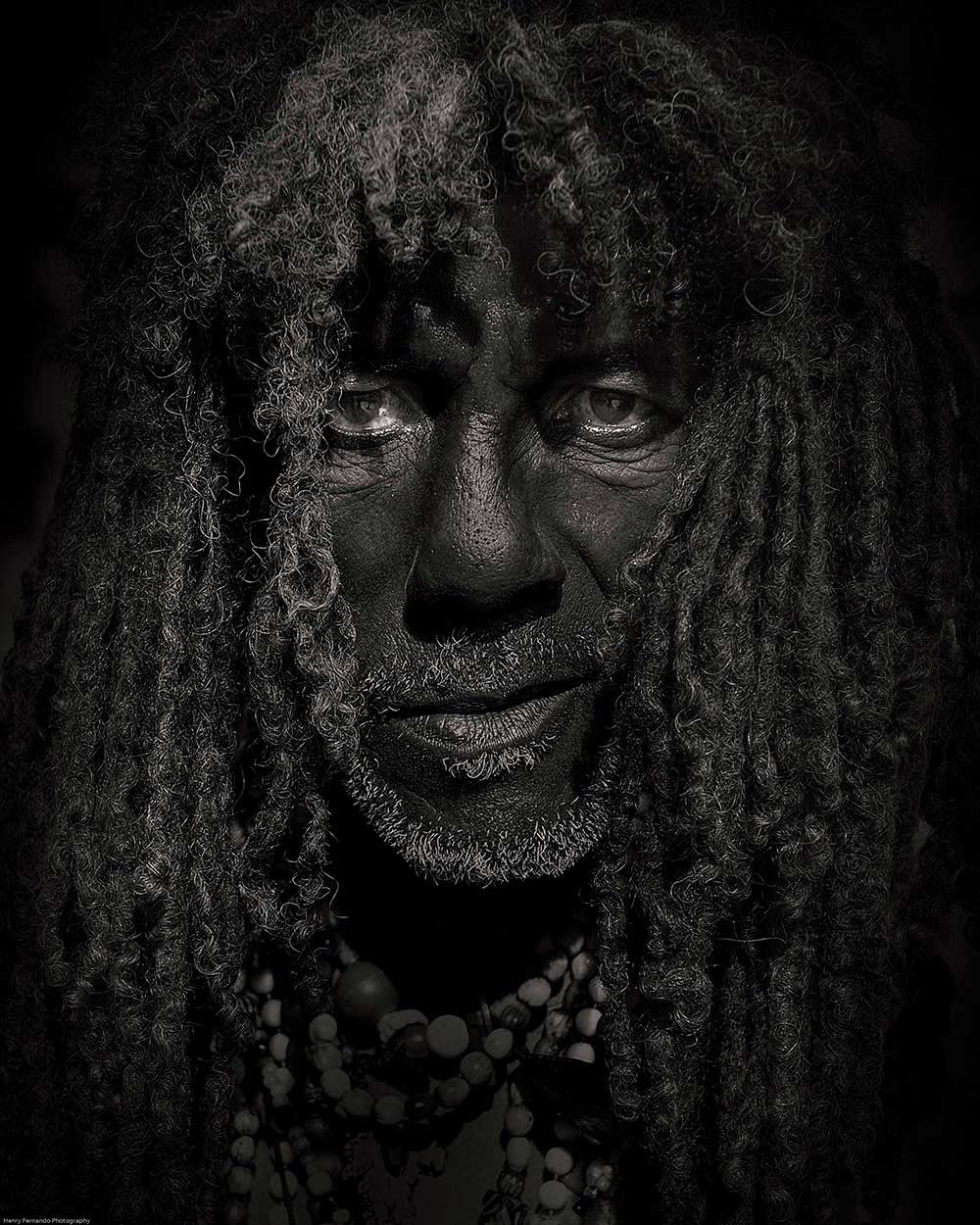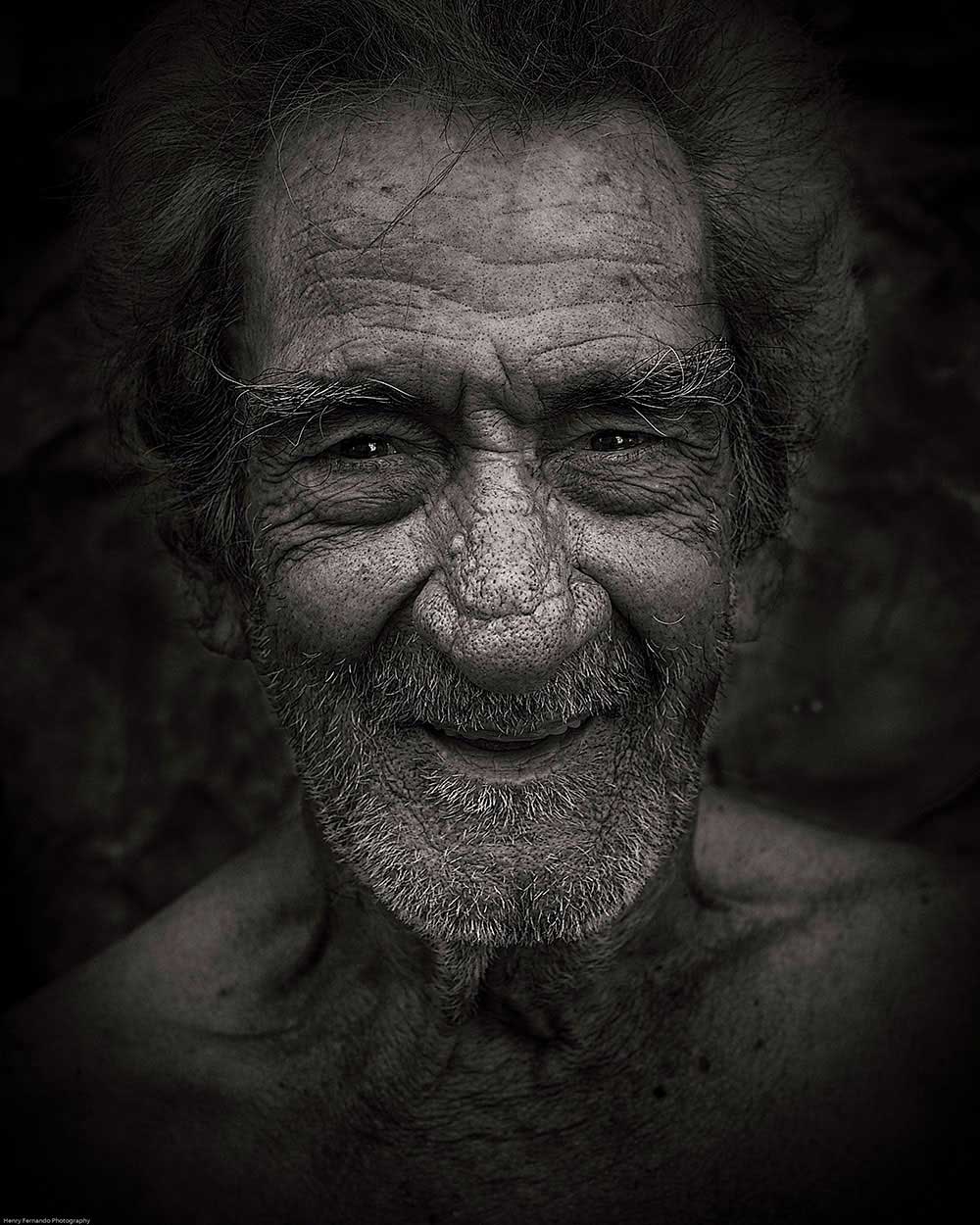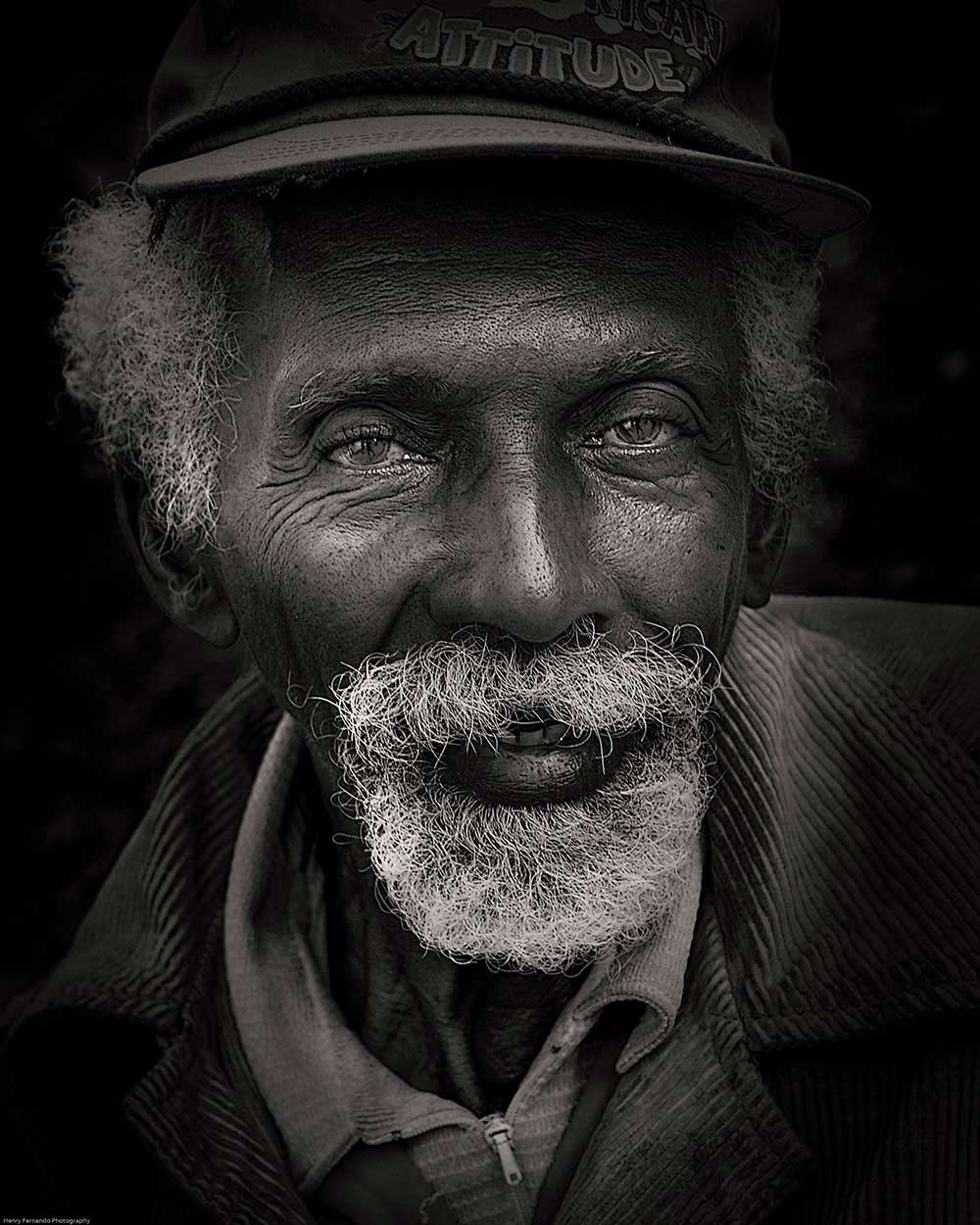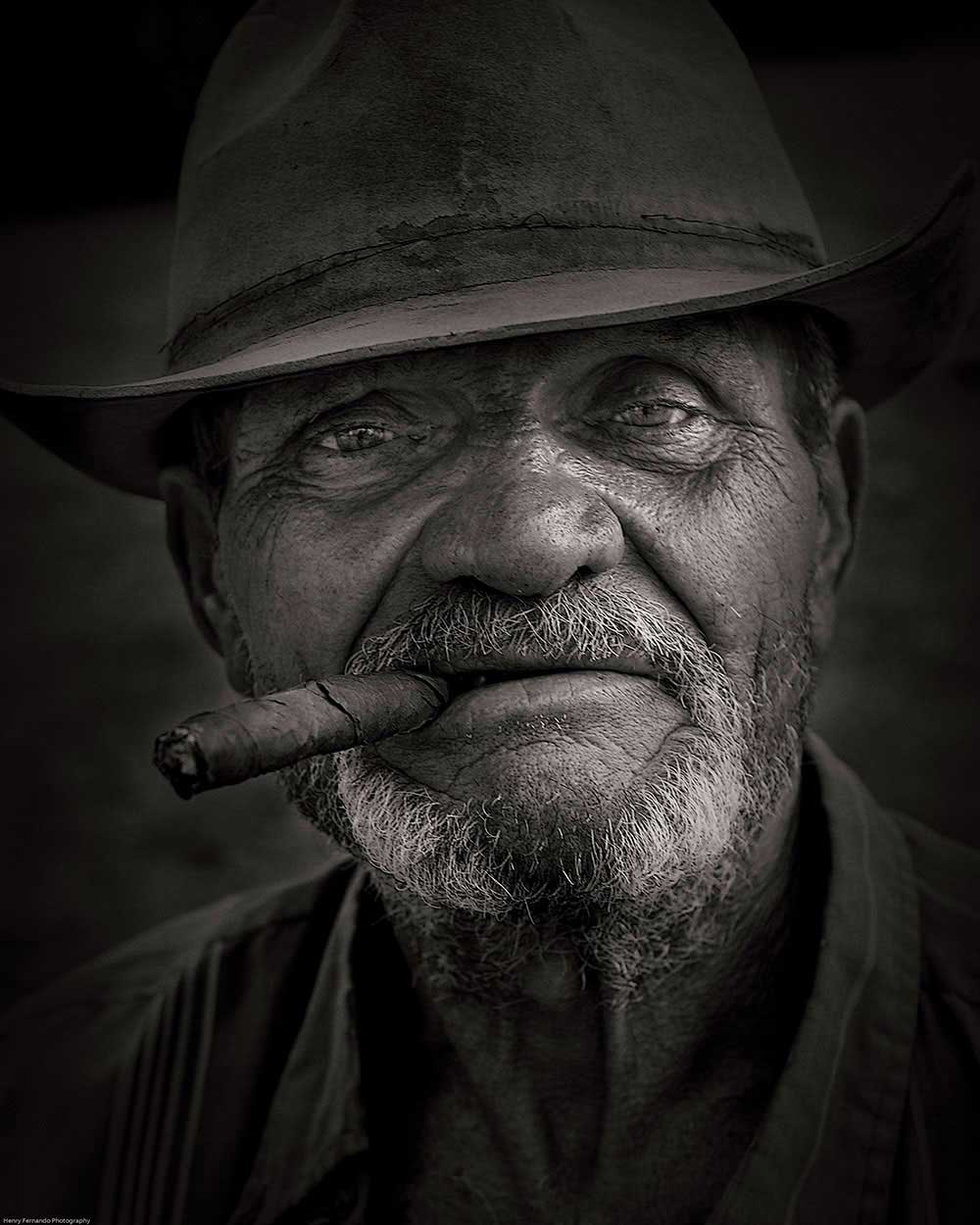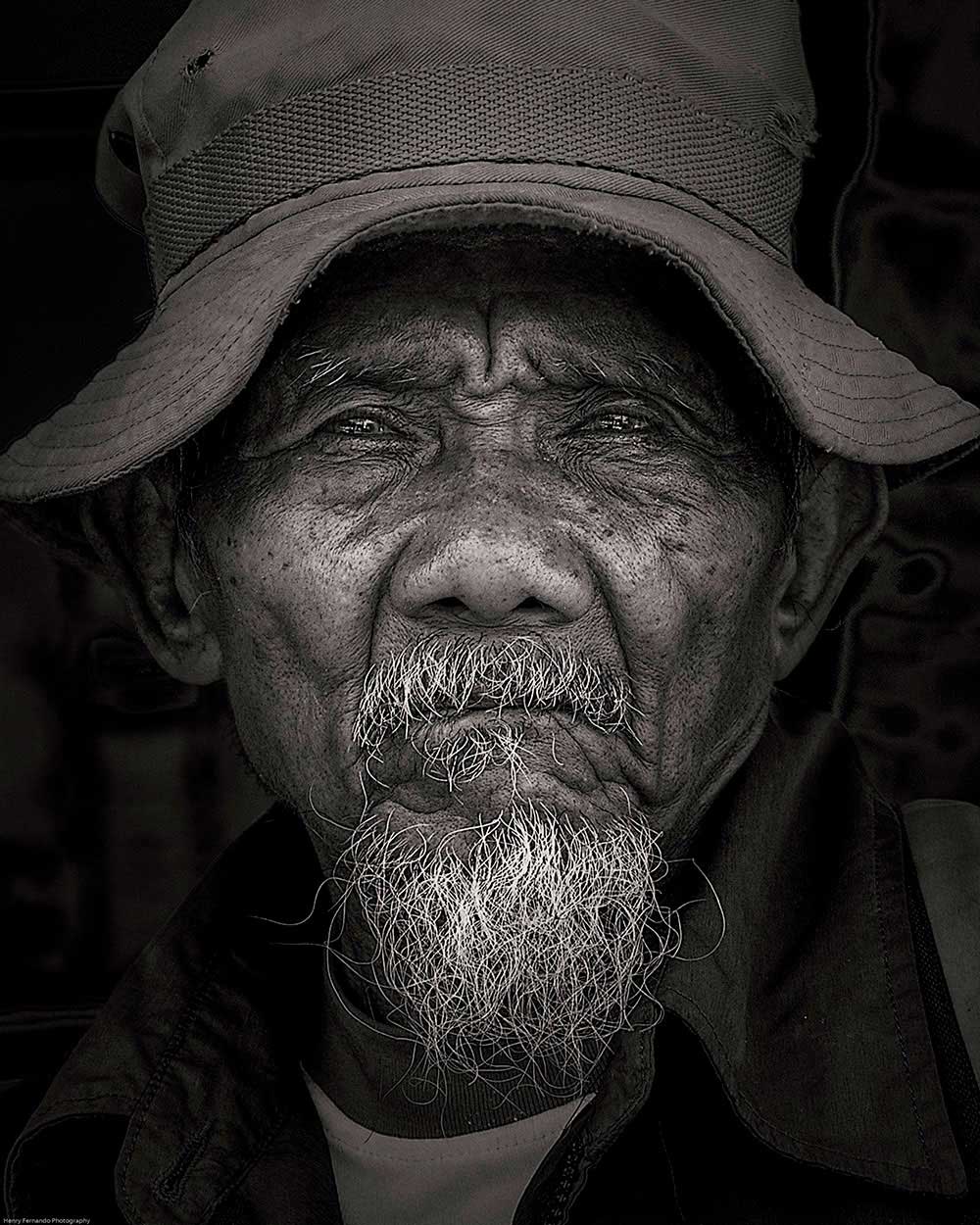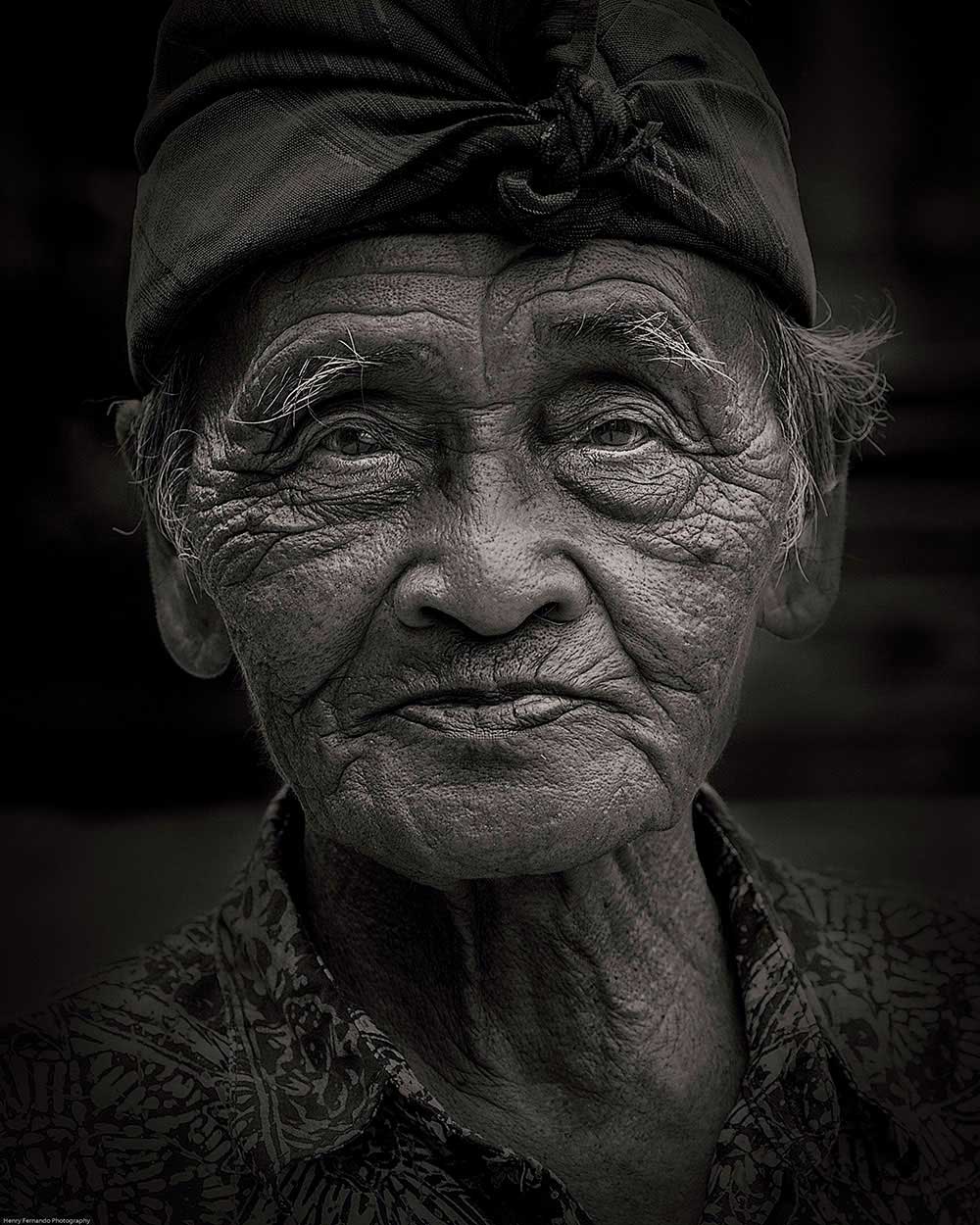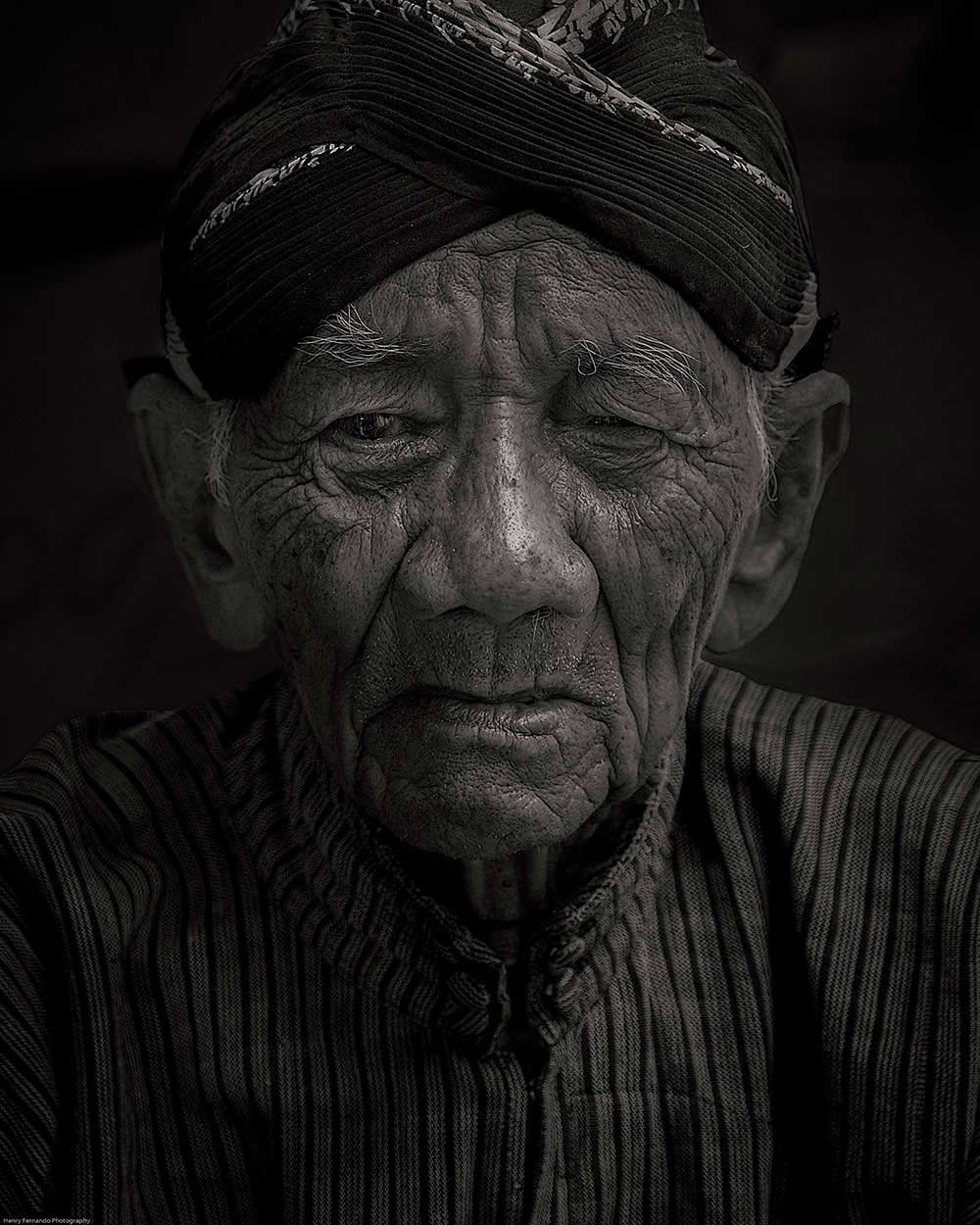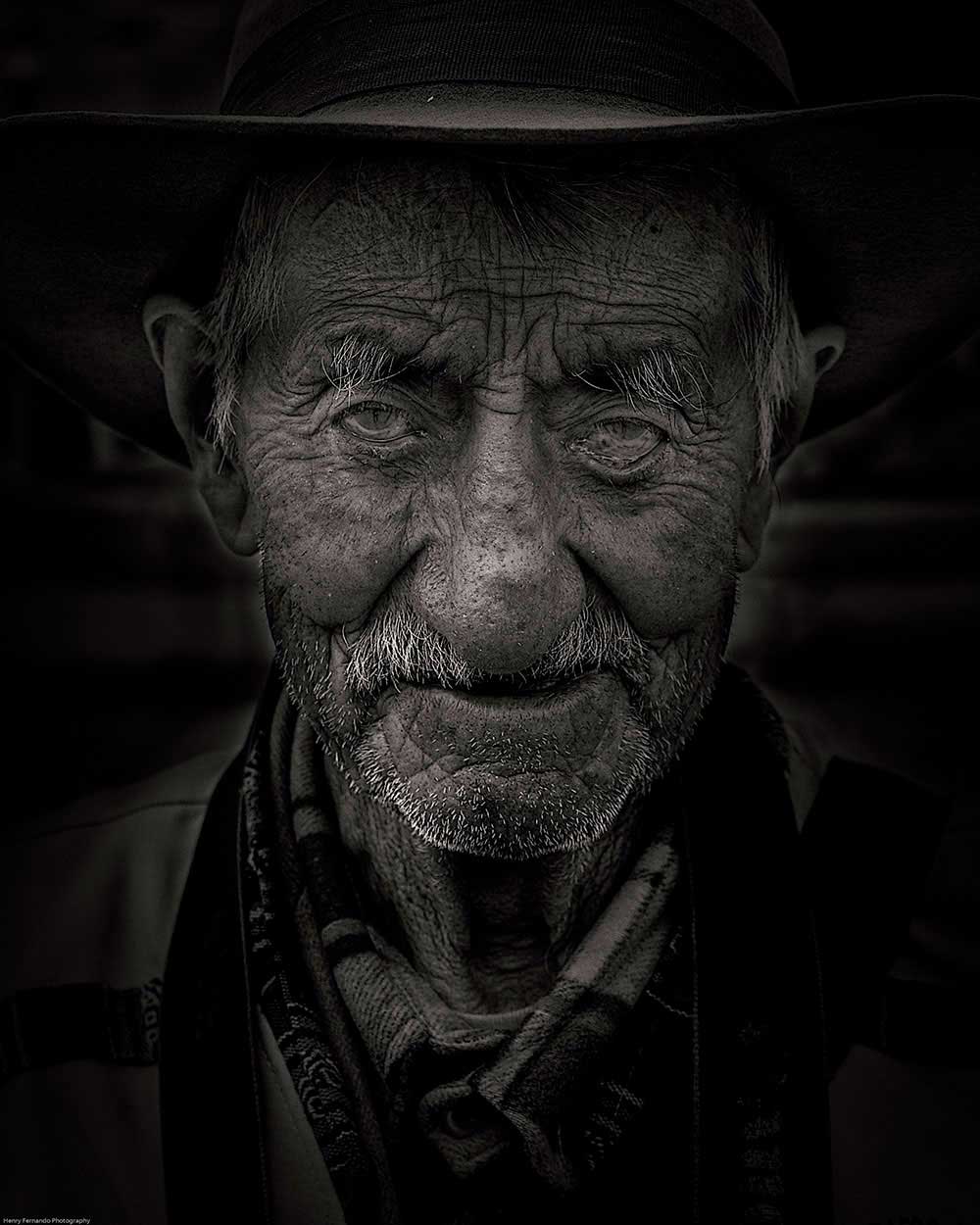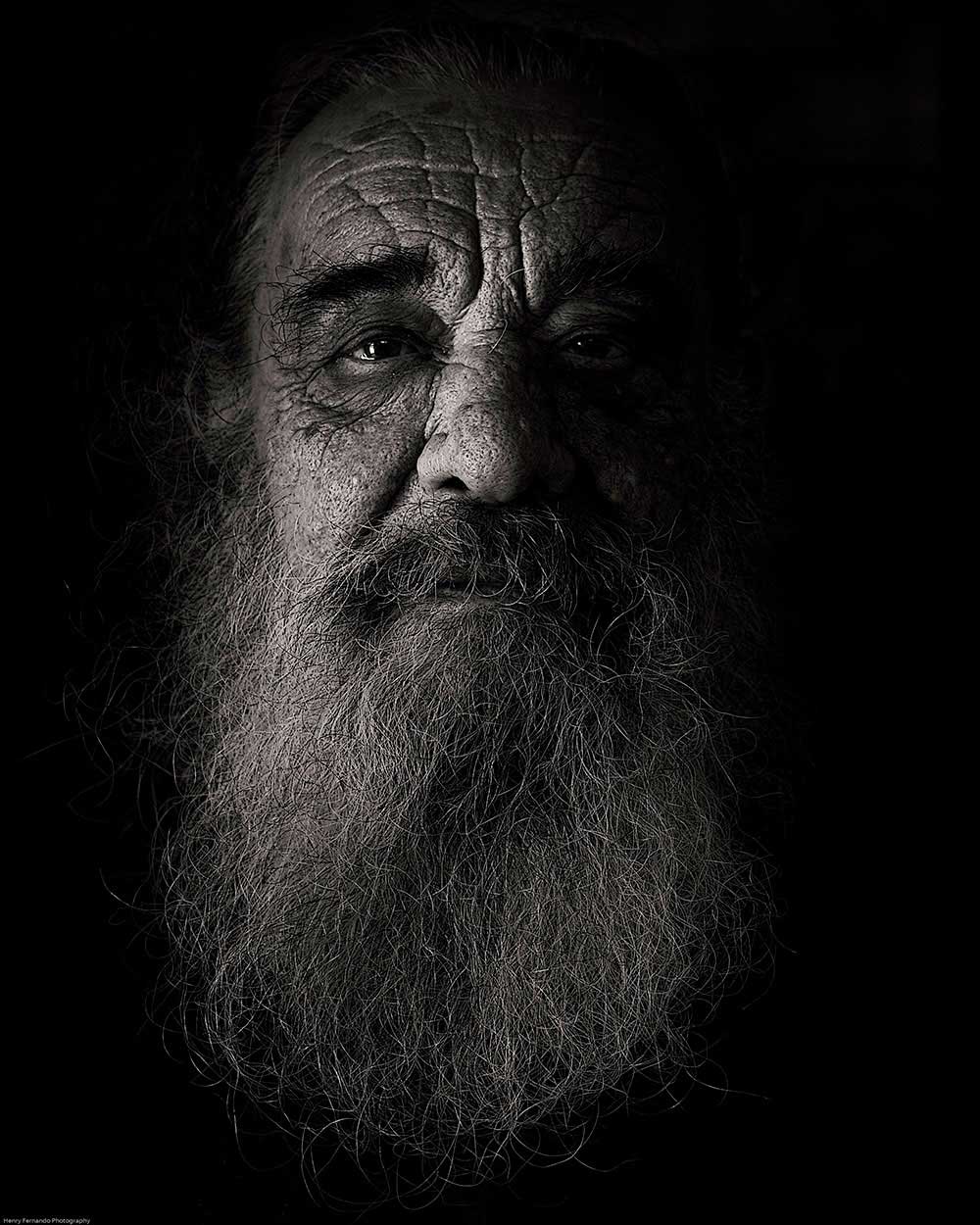Henry Fernando is a photographer based in Ottawa, Canada. His two great passions in life are travel and photography. He believes that travel helps him discover a lot about himself.
It provides him with a whole new perspective and understanding of this phenomenal world that we live in. Travel provides him not only with a sense of adventure, but it also opens doors to culture that do not revolve around fast food and social media.
Though originally trained in Biochemistry and later as an IT manager, he was always interested in photography. He experienced a renewed enthusiasm and appreciation for photography after taking a workshop in Contemplative Photography. The workshop opened his eyes to the rich and vivid colour and texture of the world around us. [Official Website]
I’d like to begin this interview by comparing this body of work to the photographer Bruce Gilden and his latest projects ‘Portraits’ and ‘Only God can Judge me’. What I find interesting is how you stated that ‘I try to see each individual just as they are, neither beautiful nor ugly’. Much like Gilden’s portraiture work you are invested in the moment, resulting in a photograph that becomes less about the individual’s appearance and more about the character behind it. Although the appearance of an individual does give the photograph a very interesting quality, would you say that the main focus of this project was to do justice to the day to day workers you stopped to capture?
Absolutely. We have become accustomed to walking around without paying much attention to our surroundings. This is also the case with the people we encounter, whether casually, or even with whom we interact, a restaurant server, a bus driver, or someone standing next to us at a red light.
I practice the contemplative approach to photography and it revolves around mindfulness. An important aspect of this approach is to be present and aware of our surroundings as we go about to photograph. It is also about seeing things as they are, without preconceived notion of like or dislike, and without judgment. It is like meditating with your camera. I believe it is this approach that led me to creating this series of street portraits.
The people I photograph are regular folks, going about their daily routine. I am drawn to people who have interesting faces. I connect with them because we can see so much of their life in their face, in their expression, in their eyes. There is no artifice in their appearance. They are not trying to look good, they are just walking to work, or to the market, going about their life, and being themselves.
When I approach someone to make their portrait, they are often surprised. Many seem puzzled and ask why, and I explain that I find them beautiful. I always do my best to work quickly, and not to take too much of their time. I may ask them to move a little, to get out of harsh light, for example, but what is most important to me is that they face the camera straight on and look directly into the lens. I don’t give any other direction. I let their expression come naturally. I find this gives each portrait a sense of presence and dignity. Most of the time, they seem to walk away happy for the brief encounter. Perhaps they feel like they were seen.
I remember each of the people in these portraits, where I photographed them, and some of the circumstances around making the photograph. Yet, I know very little about most of them in the short time that we spent doing the portrait. When you look at each of these portraits, you have no idea who they are, in particular, but instinctively, you know they have a lifetime of experiences. Each one of us sees something different in their eyes, and what we see tells us a great deal about ourselves too. I hope they show that we are all connected, we are all the same.
What I specifically love about this project is the diversity of people captured. I believe that this body of work would have taken on a completely different narrative if all individuals were of the same race or gender. As a result, this collection of images is somewhat playful in nature. And while there is real depth to them, I find this body of work to be quite light-hearted. Was this a conscious decision, to produce portraits of different people from different cultural backgrounds throughout your travels? And do you believe this project would have taken on a different narrative if presented in colour, rather than black and white?
I did not consciously set out to do this project. It happened almost by accident. At the beginning when I photograph the man from Valladolid, Yucatan (first image on the series), I was in a car driving saw him crossing the street. I was just fascinated by his face that I was compelled to stop and ask him if I can take his photo. I didn’t think much of that encounter it until I looked at the image on my computer. I was awestruck by the image. He became an inspiration and subsequent to that, it was a very conscious decision to continue to photograph others. Everywhere I travelled, I seek out to make a portrait of the different cultures. Although the looks are different, there is somethi
ng that binds them all together. Whether they are a vendor in Havana, driving a tricycle in Cebu or a palace guard in Jogjakarta, you can see the similar struggles and life challenges of trying to survive.
I’ve struggled with doing it in colour and doing it in B&W. I found that both of them are as powerful as the other because of the closeness of crop.However, with B&W I found that it really focuses on the character of their faces without the distraction of the colour of clothing or head wear.
One of my favorite images from this collection is the portrait of the man with dreadlocks. His expression is simple as he looks straight at the camera, yet the hint of a smile is what I find compelling. This image seems to dance between the idea of seriousness and playfulness. Could you tell us a little bit about how you came to shoot this portrait and your interactions with this individual?
I photographed the man with the dreadlocks on a busy street in Havana. I noticed him as he was speaking to a few people and I was struck by the look on his face. He was just so interesting, with his hair and his expression. I stood close by and approached him when he was alone. It was a very brief encounter. I asked in my limited Spanish if I could take his photograph and he agreed. I think he seems amused in a way, because he really cannot understand why I would want to photograph him. This is also one of my favourite portraits of the series. It reminds me of the Black Nazarene statue in Manila.
I’d like to discuss your inspiration behind this project. The ‘Chiaroscuro’ effect popularized by artist ‘Caravaggio’ details the importance of strong contrasts between light and dark. His unique style adds a certain amount of mystery to his paintings as well as being your foundation for this collection. Were you ever exposed throughout your travels to Caravaggio’s paintings and if so, could you describe how your exposure to his work made you want to explore this photographically?
As I indicated earlier, this project evolved from that first street portrait in Valladolid. It has been eight years since that first portrait. As I created more portraits, I looked to the great masters for inspiration. Caravaggio stands high among them and he has inspired many photographers and film makers. I have studied most of his works online and I also had the privilege of seeing an exhibition of some of his work at the National Gallery here in Ottawa.
I was of course greatly inspired by his Chiaroscuro effect, and you can see that influence in the way that I treated the photographs. However, I was even more deeply inspired by how Caravaggio pulled ordinary people from the street to model for him in his studio. They were from the lower class of society and included beggars and prostitutes. He would paint their portrait directly from life in the studio. The resulting paintings he created are remarkable for their striking realism. The subjects are all very ordinary looking and they are not idealized. If the model had dirty fingernails or dirty feet, he would paint them as they were. It is with these figures in Caravaggio’s masterpieces that the audience connects.
I also connected with this approach. It felt so much in line with the contemplative practice I take to my photography: seeing things as they are, and seeing beauty in the ordinary. The more I learned about Caravaggio and his work, the more I felt compelled to photograph these beautiful ordinary people everywhere I go.
Would you agree with the notion that this project, ‘Caravaggio on the street’ is as much a documentary report as is an artistic project, I personally feel this collection attempts to juggle both through the application of light and dark?
There is definitely a fine line that now separates documentary photography and fine art photography. I want to tell stories through my pictures and I like to create images that we can respond to, something that speaks to us. At the same time, I tried to be imaginative and I play with the aesthetics of the final image that I create.
In my contemplative photography practice, I tried to avoid attaching labels on any of my work. I think this is one of the reasons why I have the freedom to explore and experiment the endless potential of the field of photography. That said, I would leave it to the viewer to decide whether it’s a documentary or art.
Francesco Scalici
A recent MA graduate from the University of Lincoln, Francesco has now focused on landscape photography as the basis of his photographic platform. An author for DODHO magazine, Francesco’s interest in documentary photography has turned to writing and has had various articles, interviews and book reviews published on platforms such as: ‘All About Photo.com’, ‘Float Magazine’ and ‘Life Framer Magazine’. Currently on a photographic internship, Francesco has most recently been involved in the making of a short film titled: ‘No One Else’, directed by Pedro Sanchez Román and produced my Martin Nuza.




